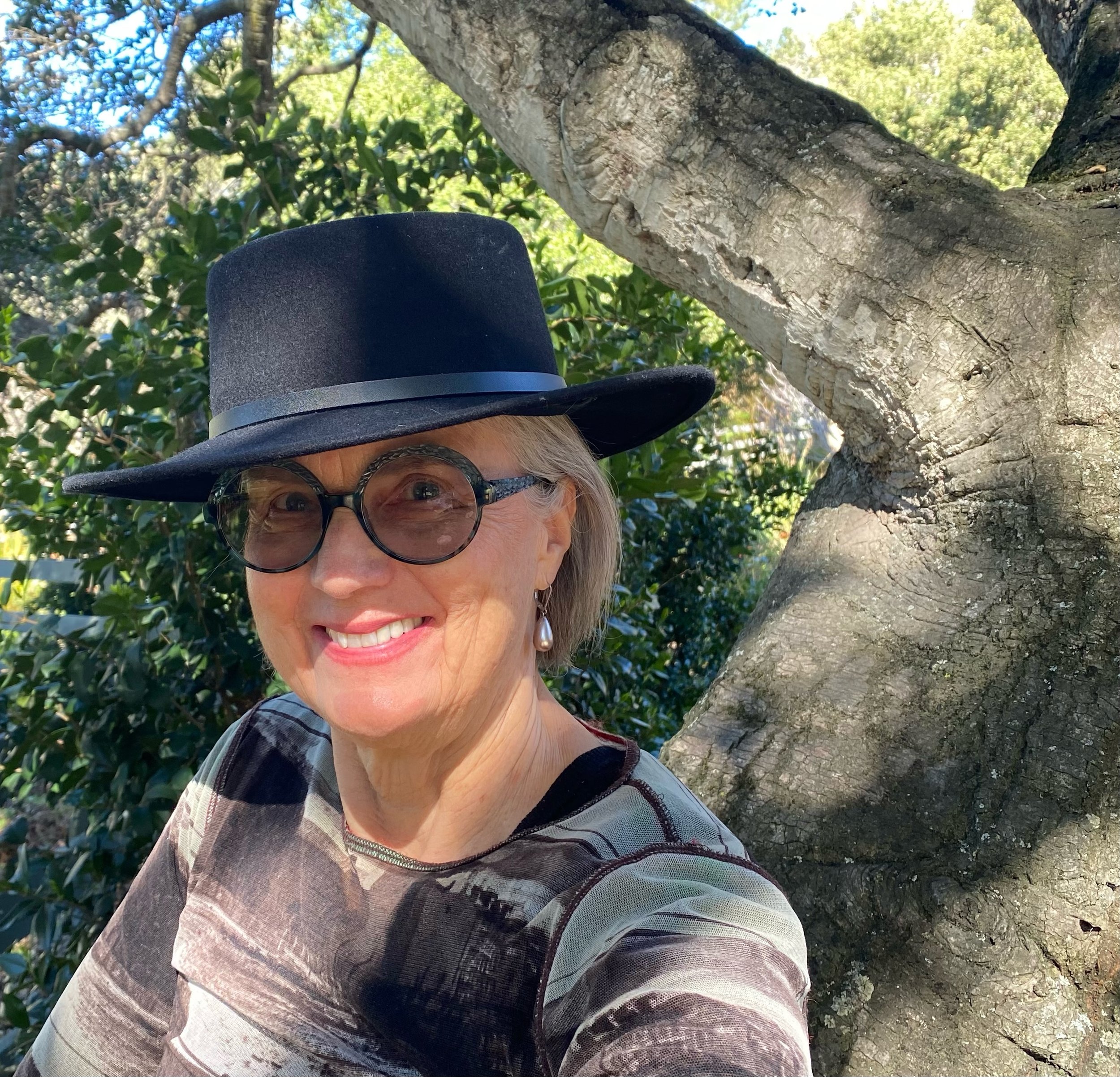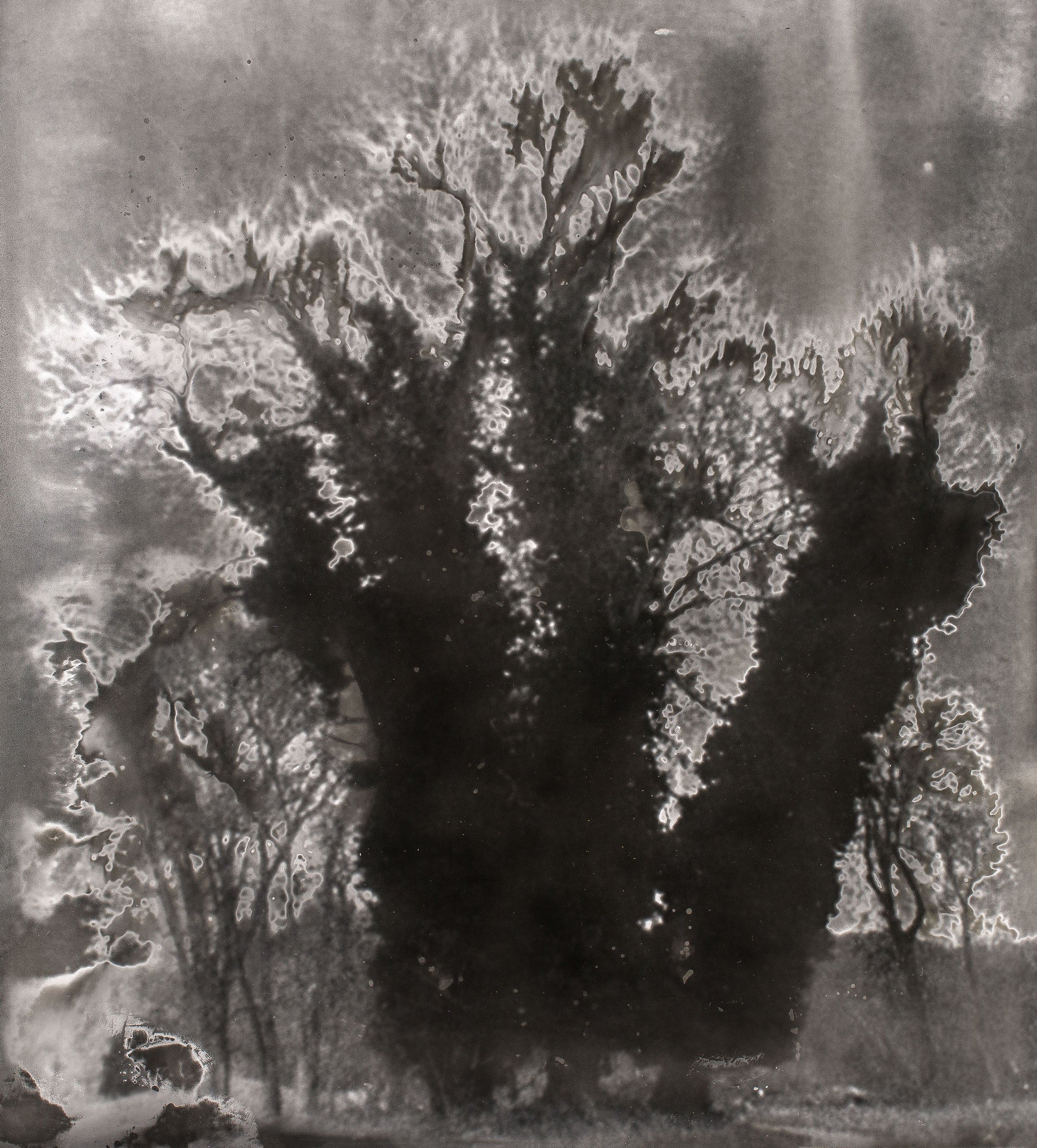Jane Olin’s Photographic Journey
by Patrice Vecchione
Monterey Herald - March 2, 2022
Just as many of us do, Carmel Valley photographer Jane Olin goes to nature for solace and to revive her spirit. She also takes to the trail, particularly at Garland Park, not far from her home, for artistic inspiration.
On our recent walk together, she told me, “Long walks in nature quiet me and allow me to access depth. In the forest, first I process what is not art. By listening, I honor whatever comes. After about 20 minutes, I shift into a more expansive place, move into inspiration. Time goes away, and I think about my artmaking.”
When Jane Olin was growing up, nature was just outside her door. “As a child, I was nurtured by the forest where my sister and I played every day. I didn’t know we were forest bathing, but we were.” The woods became her playground and refuge. The only time Jane lost her way on the land, she rested against a large pine. It was after nightfall when her uncle found her there, fast asleep. When lost, she knew she could trust the trees, that they were her protectors and comrades. That Jane receives inspiration from trees is not only evident in her being, but in her new exhibit, In the Company of Trees, on view at the New Museum of Los Gatos until June 5.
The work of Carmel Valley photographer Jane Olin is featured in the show In the Company of Trees is on view at the New Museum of Los Gatos until June 5.
Jane didn’t say that the trees speak to her; what she did reveal is the sense of relationship she experiences with them. When a person spends significant time with such magnificent beings, the bond is cellular and primary. New research tells us that trees communicate with each other, that they are cooperative, sending moisture to the nearby trees that are in greatest need of sustenance, and more. So knowing a person as kindred, might trees communicate in an inter-species kind of way?
Look at Jane’s new work and I think you’ll agree that there’s more than observation, craft, technique and inspiration going on. Her work on view is a kind of conversation. The large black and white photographs are like nothing I’d ever seen before. Standing before the pictures, it’s as though one enters the soul of tree-ness as if she enters the essence of these great beings so that we may see the heart of them. She calls this work “Process Photography.” After taking photographs, it’s in the darkroom, over many hours and through various processes, that she develops the work into what it becomes or rather, she engages with the process to bring the work into being, and Jane can spend a month working daily and end up with just a single picture that speaks to her, that resonates.
Walking at Garland Park with Jane, listening to her talk about her art, it was evident that I was with an artist who is not only deeply committed to her work but who breathes and truly embodies it. But this wasn’t always so. As it is for all mothers and, particularly those who work outside of the home as Jane did for many years, her life was daily full and consuming. Yet the question, “What is my passion?” found its way in and didn’t let up.
When her son was in high school, his art teacher, recognizing this student’s talent, met with Jane who later talked to her son about pursuing art as a career. However, that wasn’t his interest. In the course of their conversation, Jane had one of those lightning bolt moments, “I’m the one who wants to be an artist!”
“Women have a third chapter in our lives. I was 49 or 50 when I realized this, and I’ve never looked back!” Once she retired from the family business and her children were launched, Jane stepped back from household duties and began to focus on studying and creating art.
Of course, this wasn’t easy. For most of us, the artistic path isn’t, especially not at first. It means following an inner dictum, doing something that, very likely, won’t pay you a salary, and having to be with the most intimate parts of yourself day in and day out, asking questions, trying out new things, only sometimes finding success. It took Jane time to develop and grow but, “Once I truly identified as an artist, I felt, I knew, that artmaking was something I had to do.” Over time, she came to realize, as all artists must, that her vision, “is as valid as anyone else’s. I’ve learned to hold my own power rather than projecting it onto anyone.”
And though this is the essential challenge for all artists, there’s a significant aspect that is particular to women. Only relatively recently have we begun to see women’s art receiving much attention and recognition, but I wonder if there will ever be equity. Consider that as of 2018, data from the National Museum of Women in the Arts, reports that only 27% of solo exhibitions feature women artists. Some 25–35% of artists with gallery representation in the U.S. and U.K. are women. As of 2020, only 11% of the acquisitions made by major U.S. museums were for work by women. Contrast this with the fact that 51% of all working visual artists are women! The truth behind such numbers can’t help but seep into the consciousness of all women artists. But statistics wouldn’t stop Jane.
Locally, since 2011, of the 103 exhibitions in the main gallery of the Monterey Museum of Art, 23 featured the work of female artists and 36 presented the work of male artists. The remaining 44 shows exhibited two or more artists of both genders. In the exhibitions called Currents + FLUX, a gallery within the museum that is dedicated to the work of emerging and evolving California artists, from 2018 to 2021, 27 of the 41 shows were comprised exclusively of female artists and eight of only male artists, the remaining were mixed. Of course, as our understanding of gender evolves and we recognize non-binary artists, whose work we see in art museums, the numbers will reflect that.
What is larger than any statistics though (thank goodness!) is art’s calling. Jane told me what I know but need to hear over and over again because though many artists work alone, we need each other, we need that sense of camaraderie, “Some magic happens in the creative process. If I stay away from creating for too long, my mood shifts, and I can become anxious, even dropping down into depression.”
“I decided a long time ago that I wanted to make art that flows from a deep place within myself, work that I identified through my intuition. First and foremost, I make the art I want to make, that I respond to, and if I make art that has a quality that a viewer can sense and respond to, I’m happy.”
About her new show, Jane said, “My tree work pushes the boundary. I hope to inspire viewers to really look at trees and to remember their connection to them.” If you see In the Company of Trees, I’m certain that when you encounter trees, you’ll remember.


